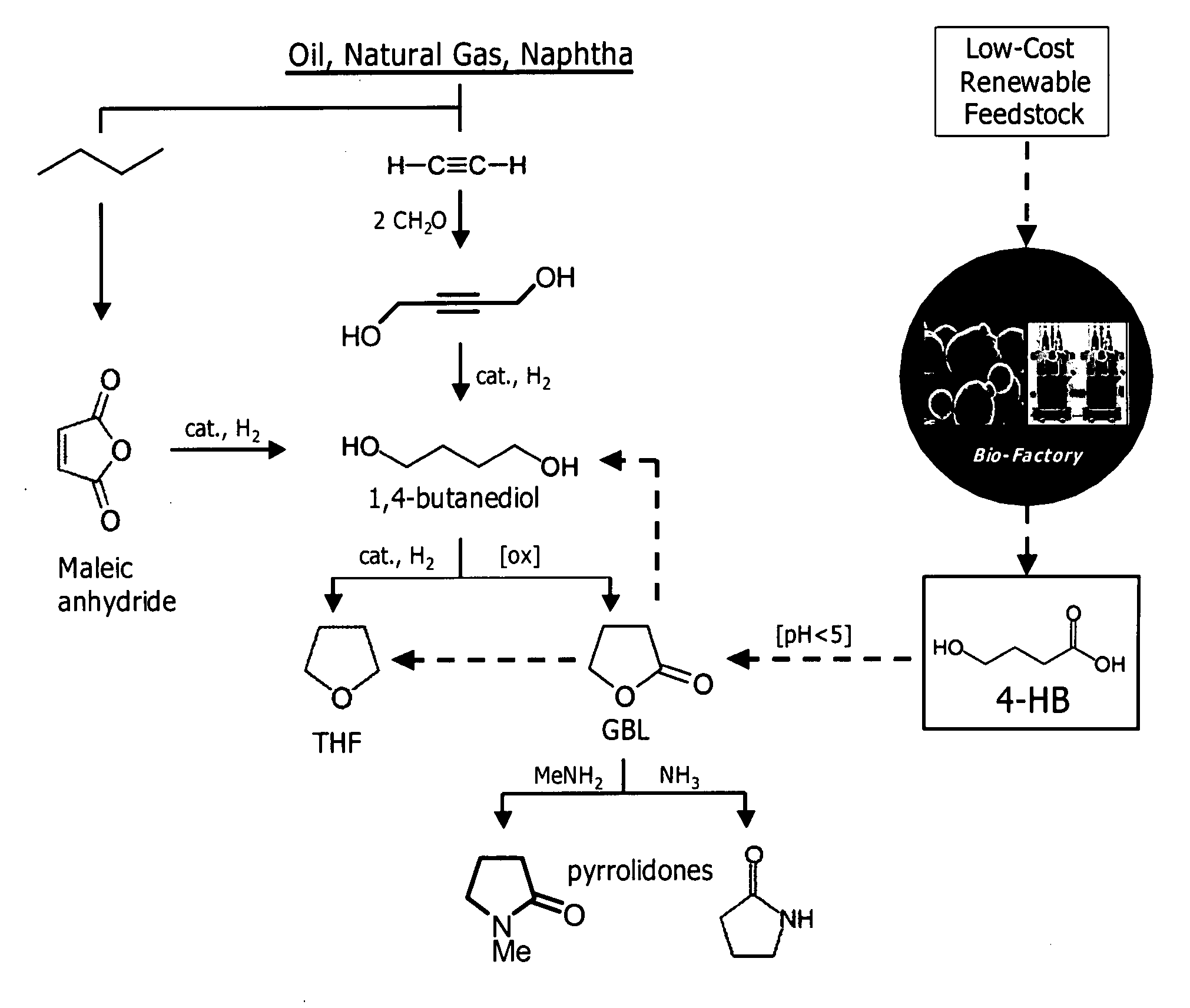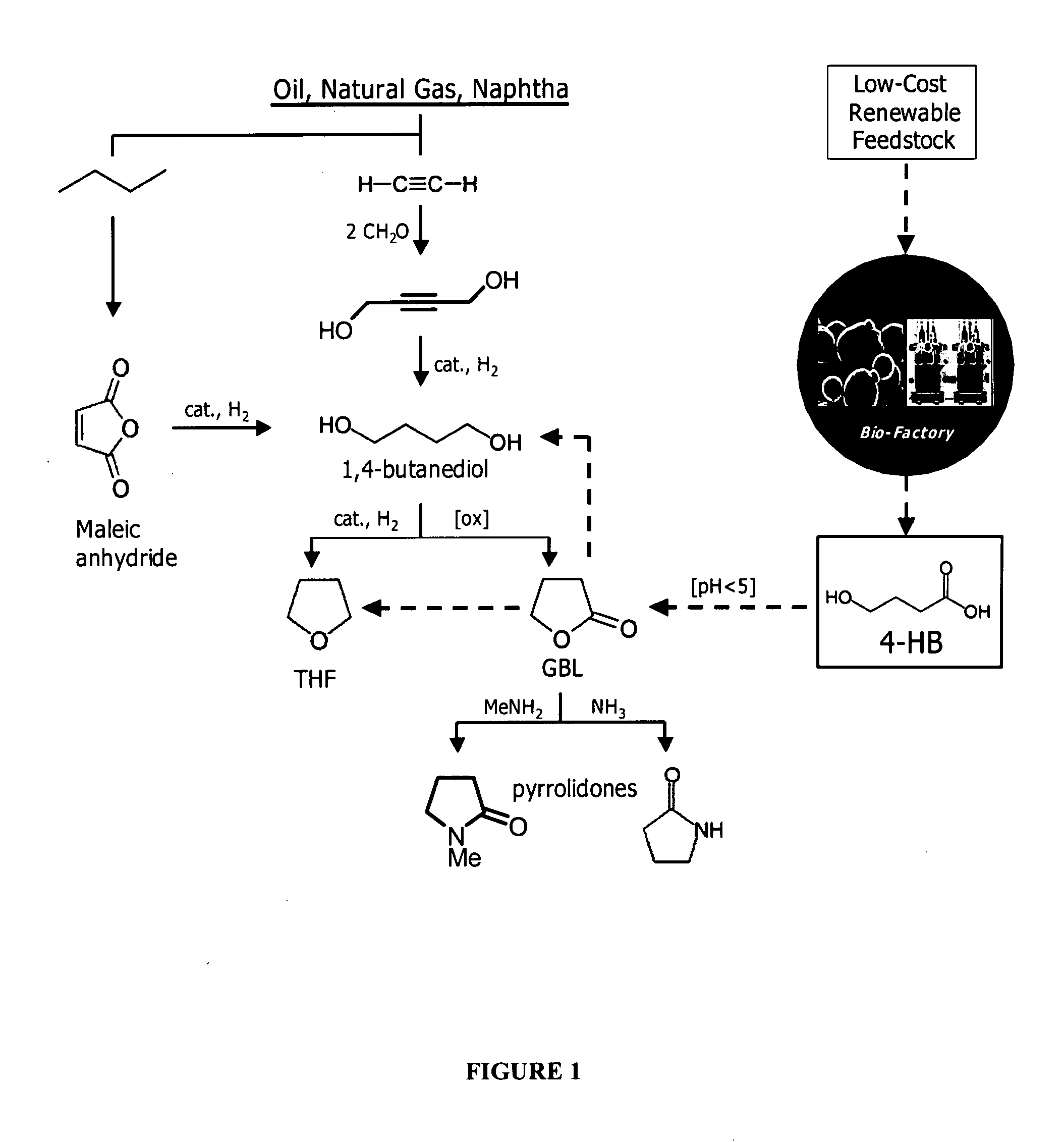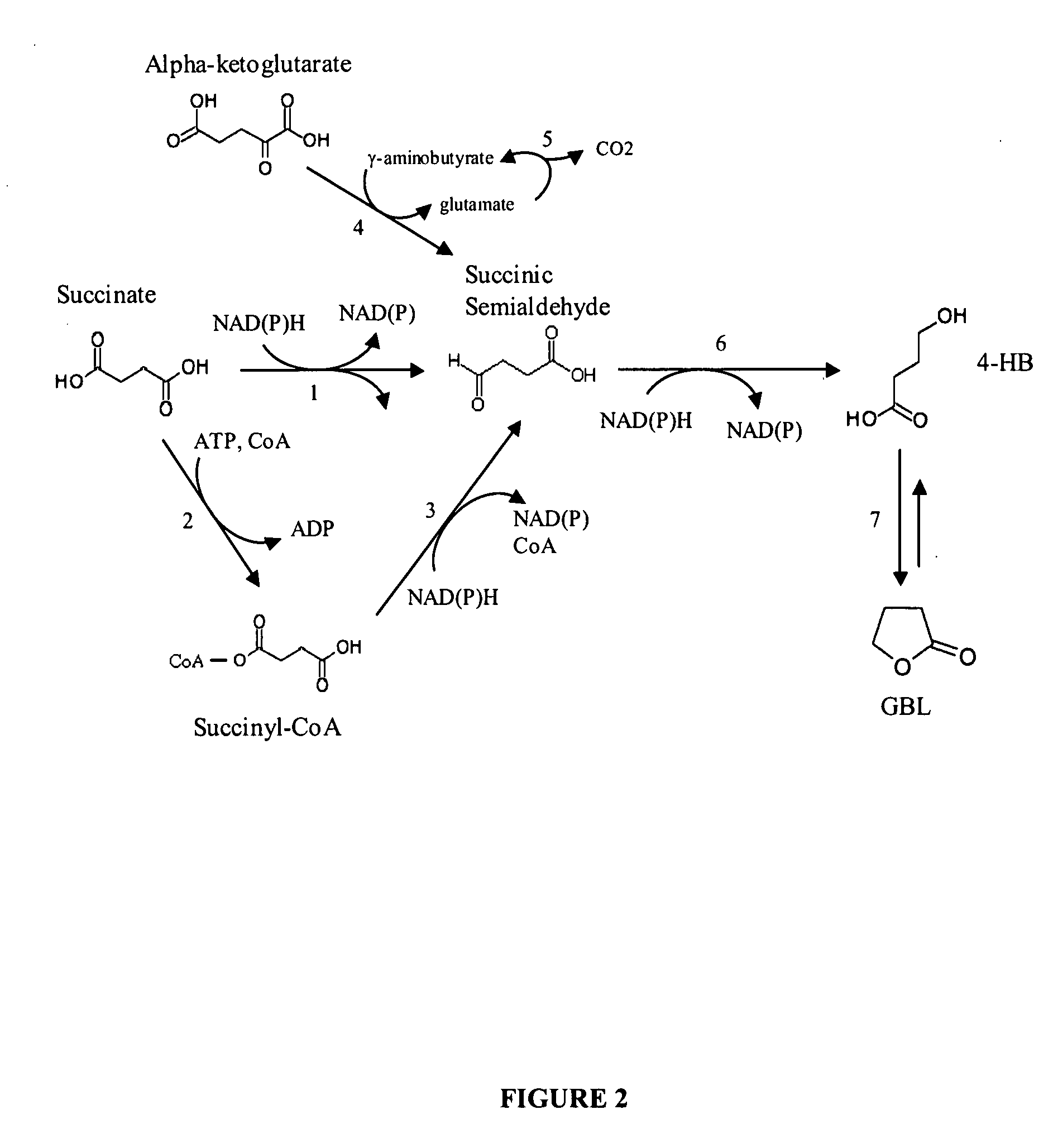Methods and organisms for the growth-coupled production of 1,4-butanediol
- Summary
- Abstract
- Description
- Claims
- Application Information
AI Technical Summary
Benefits of technology
Problems solved by technology
Method used
Image
Examples
example i
Biosynthesis of 4-Hydroxybutanoic Acid
[0125]This Example describes the biochemical pathways for 4-HB production.
[0126]Previous reports of 4-HB synthesis in microbes have focused on this compound as an intermediate in production of the biodegradable plastic poly-hydroxyalkanoate (PHA) (U.S. Pat. No. 6,117,658). The use of 4-HB / 3-HB copolymers can be advantageous over the more traditional poly-3-hydroxybutyrate polymer (PHB) because the resulting plastic is less brittle (Saito and Doi, Intl. J. Biol. Macromol. 16:99-104 (1994)). The production of monomeric 4-HB described herein is a fundamentally different process for several reasons: 1). The product is secreted, as opposed to PHA which is produced intracellularly and remains in the cell; 2) for organisms that produce hydroxybutanoate polymers, free 4-HB is not produced, but rather the Coenzyme A derivative is used by the polyhydroxyalkanoate synthase; 3) in the case of the polymer, formation of the granular product changes thermodyna...
example ii
Production of 4-Hydroxybutanoic Acid in E. coli
[0139]This Example describes the biosynthetic yields for 4-hydroxybutanoic acid resulting from each biochemical pathway.
[0140]In this section, the maximum theoretical yields of 4-HB from glucose are calculated assuming that each of the three metabolic pathways depicted in FIG. 2 are functional in E. coli. A genome-scale metabolic model of E. coli, similar to the one described in Reed et al., Genome Biol. 4:R54 (2003), was used as the basis for the analysis. The energetic gain, in terms of ATP molecules produced, of each maximum yielding pathway is calculated assuming anaerobic conditions, unless otherwise stated. 4-Hydroxybutyrate is assumed to exit in E. coli via proton symport, as is the case with most organic acids. It is also possible that GBL is secreted by simple diffusion, and in this case the energetics would be more favorable than in the case considered here. The impact of cofactor specificity (i.e., NADH or NADPH-dependence) ...
example iii
Production of 4-Hydroxybutanoic Acid in Yeast
[0146]This Example describes the biosynthetic yields for 4-hydroxybutanoic acid resulting from each biochemical pathway in S. cerevisiae.
[0147]In this section, the maximum theoretical yields of 4-HB from glucose are calculated assuming that each of the three metabolic pathways depicted in FIG. 2 are functional in S. cerevisiae. A genome-scale metabolic model of S. cerevisiae, similar to the one described in Forster et al. (Genome Res. 13:244-253 (2003)) was used as the basis for the analysis. The energetic gain of each maximum yielding pathway is calculated assuming anaerobic conditions unless otherwise stated. 4-hydroxybutyrate is assumed to exit S. cerevisiae via proton symport, as is the case with most organic acids. The impact of cofactor specificity (i.e., NADH or NADPH-dependence) of the participating enzymes on the maximum yield and energetics of each pathway was also investigated.
[0148]The results from the analysis are shown in T...
PUM
| Property | Measurement | Unit |
|---|---|---|
| Mass | aaaaa | aaaaa |
| Mass | aaaaa | aaaaa |
| Mass | aaaaa | aaaaa |
Abstract
Description
Claims
Application Information
 Login to View More
Login to View More - R&D
- Intellectual Property
- Life Sciences
- Materials
- Tech Scout
- Unparalleled Data Quality
- Higher Quality Content
- 60% Fewer Hallucinations
Browse by: Latest US Patents, China's latest patents, Technical Efficacy Thesaurus, Application Domain, Technology Topic, Popular Technical Reports.
© 2025 PatSnap. All rights reserved.Legal|Privacy policy|Modern Slavery Act Transparency Statement|Sitemap|About US| Contact US: help@patsnap.com



